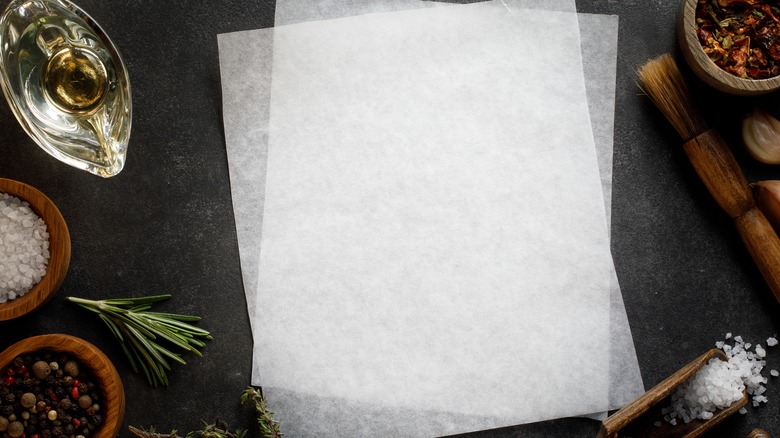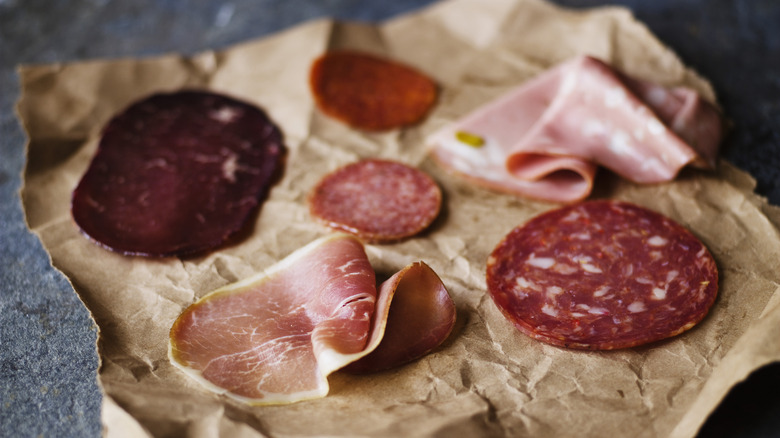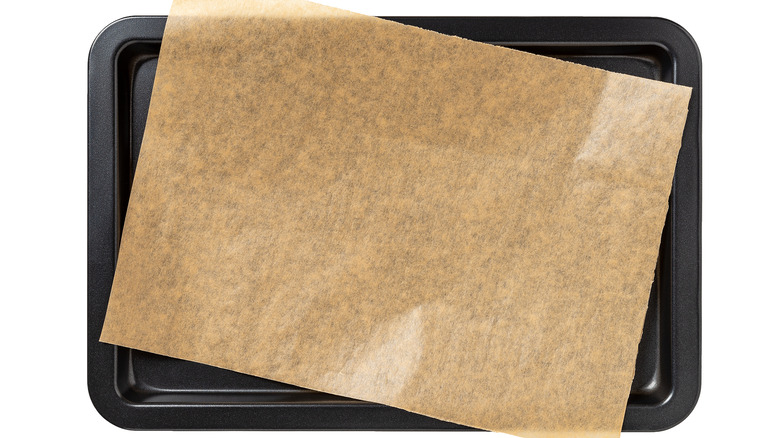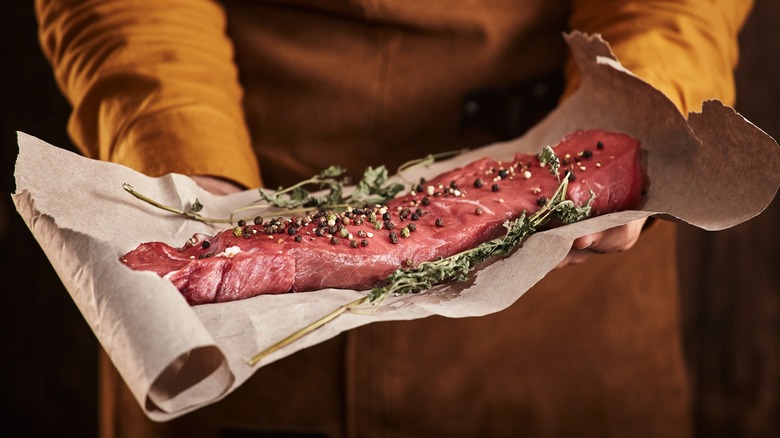The Difference Between Butcher And Parchment Paper
The cooking questions are never-ending. Can you replace brown sugar with white sugar? Does the color of my baking pans really affect how my bake turns out? Can I swap out vanilla with something else? What is the real difference between all-purpose flour and bread flour? These are all real and valid questions we ask ourselves while trying to traverse the kitchen. Many of us wonder if it's safe or realistic to use what we already have stowed away or if we have to write up a new shopping list.
A good cook must learn the ins and outs of their kitchen and its tools, from knowing how to put out an oil fire to learning how to wield knives properly. The tools we use in the kitchen are just as important to understand as the food we're working with (via Taste of Home). For instance, you should definitely familiarize yourself with the differences between butcher and parchment papers and how to use them properly.
What is butcher paper?
Butcher paper, like most food-safety items, was only created in the last few centuries. According to Oren International, butcher block paper was used in the early 1800s to keep everything in the workspaces and stores clean. Butcher paper, from that point on, began to evolve. Different kinds of butcher paper were being made for different uses. However, all were meant to be durable, prevent blood from leaking out, and be moisture resistant.
Essentially, butcher paper is crafted from FDA-approved wood pulp and comes in a handful of colors that all indicate a different purpose. Webstaurant Store explains that butcher paper comes in white, pink, and brown. The white paper is not coated (making it breathable) and has been bleached. It is most commonly used to wrap sandwiches and smoked meat. Pink paper (peach paper) is better at hiding impurities (aka blood) than white paper and stops meat products from leaking. Lastly, the brown/green (Gardenia) butcher paper is the premium kind, completely sealing in moisture, preventing leaks, and is the most heavy-duty out of the three. Ultimately, About Mechanics claims that butcher paper is meant to wrap meat and fish products in a strong and safe barrier to prevent contamination and a mess in a space where contamination and messes are very common.
What is parchment paper?
Much like butcher paper, it wasn't until the 19th century that we saw the arrival of parchment paper in our kitchens. Parchment Paper states that in 1847, French scientists developed a new way to treat paper. They simply plunged sheets of paper into a mix of sulfuric acid and water, and then the parchment was rinsed in a blend of water and ammonia. Luckily, we now have more advanced methods. Silicone, known for enduring high temperatures, was introduced to parchment paper in 1943 and is still used today. Silicone also doesn't taint any of the food products it uses, so it is perfectly safe on parchment paper.
Martha Stewart reportedly loves using parchment paper. It is due to the product's grease- and moisture-resistant quality as well as its ability to be used in the oven. This makes it perfect for lining baking pans and sheets, wrapping leftovers, and protecting countertops from messy foods (much like butcher paper). It is important to point out that parchment paper and wax paper are not the same. Wax paper will melt under hot temperatures and even catch on fire under certain circumstances. Even though these products look alike, they should not be confused.
Can you swap one for the other?
As with many aspects of life in and outside the kitchen, there are exceptions to the rules. There is no right or wrong answer as to whether you can swap butcher paper with parchment paper and vice versa. The best we can do is give you all the do's and don'ts of these kitchen materials and let you draw your own conclusions based on your personal circumstances. First things first, Lacademie warns that butcher and parchment papers were created for different purposes. This means that they are chemically different from one another. That being said, they are both fairly heat-resistant products and can be used for baking, grilling, or smoking meat.
As for their differences, MasterClass states that butcher paper tends to be thicker than parchment paper, making it the safer option for hardcore projects. Parchment paper is better to use if you are worried about food items sticking to surfaces because silicone makes the paper non-stick. MasterClass suggests using butcher paper with meat or for smoking purposes and parchment paper as a non-stick liner for baking.



